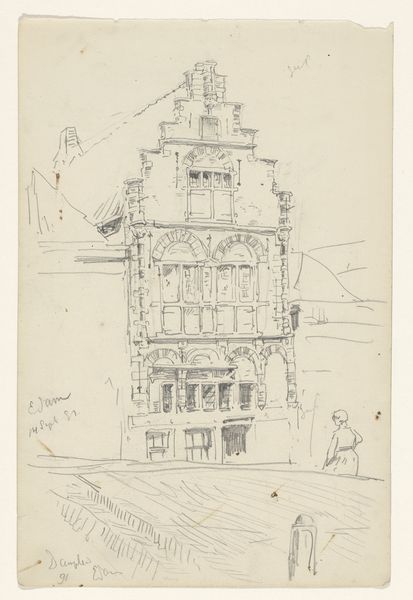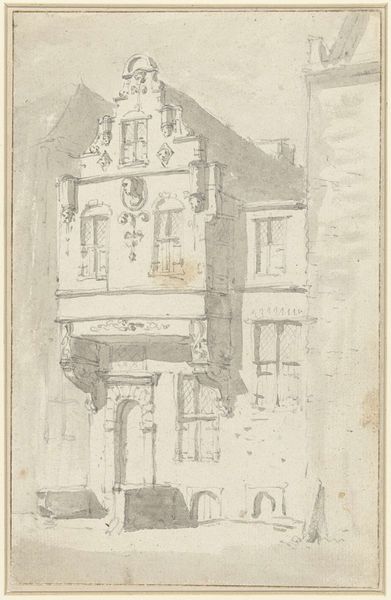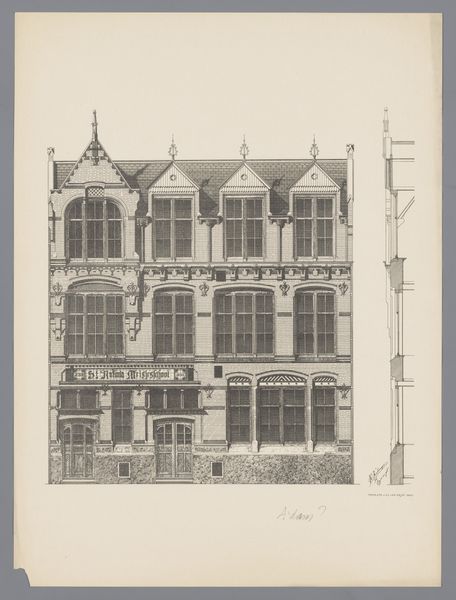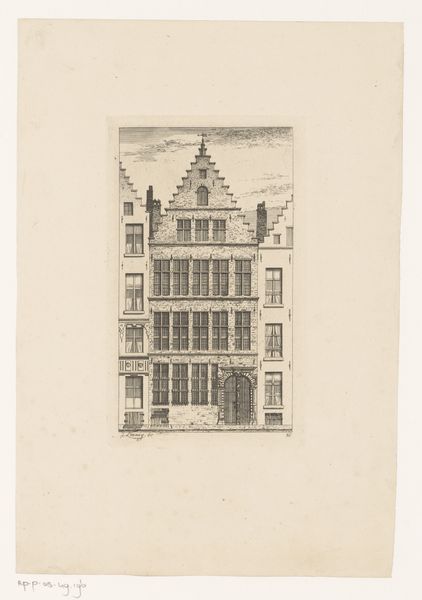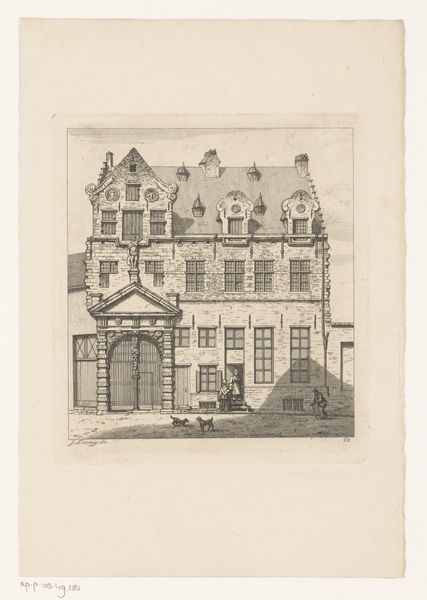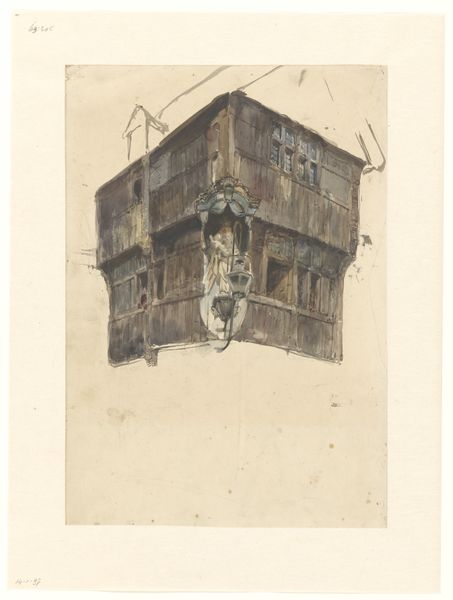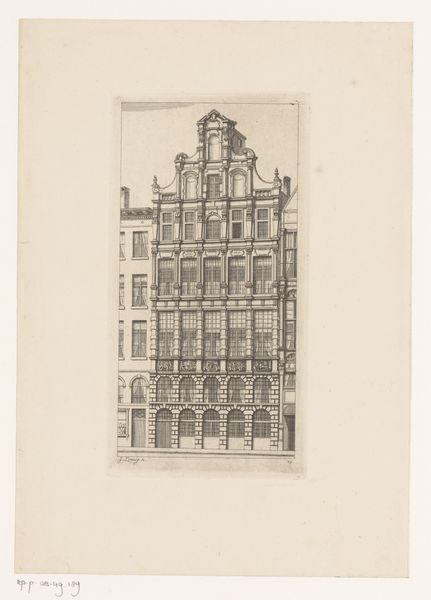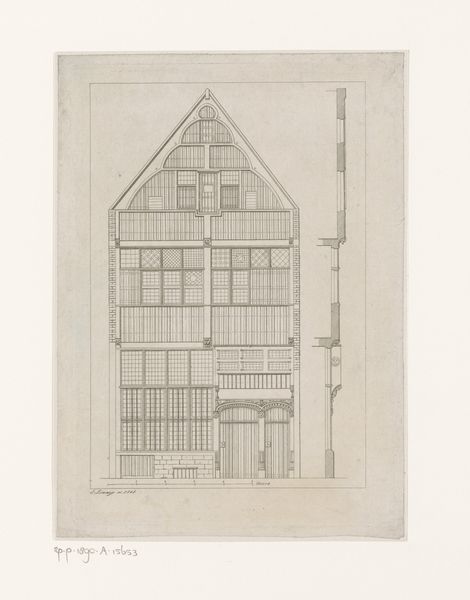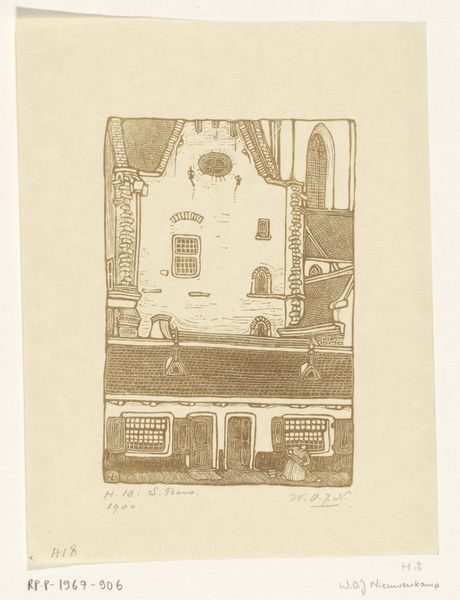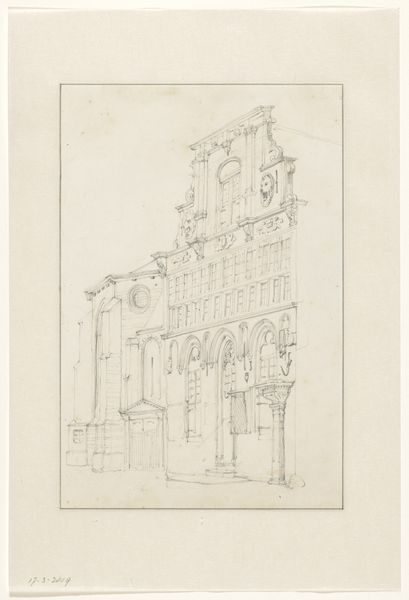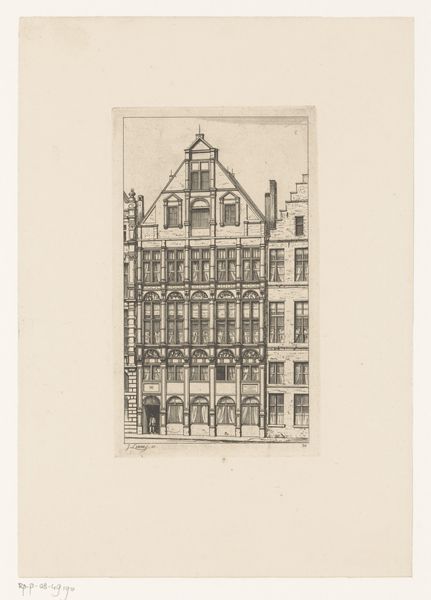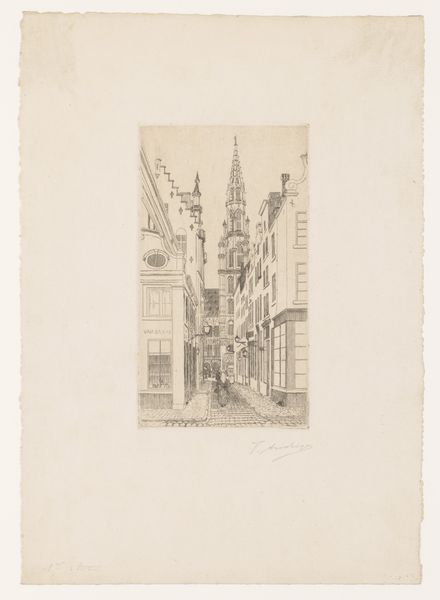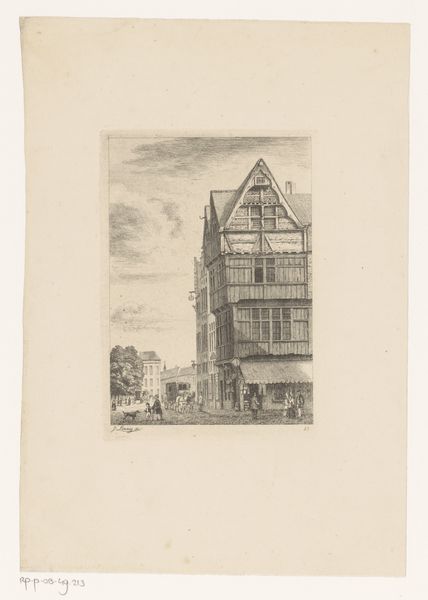
drawing, painting, paper, watercolor
#
drawing
#
dutch-golden-age
#
painting
#
landscape
#
etching
#
paper
#
watercolor
#
classicism
#
cityscape
#
watercolor
Dimensions: height 442 mm, width 305 mm
Copyright: Rijks Museum: Open Domain
Editor: So, this is "Stadhuis van Den Haag," a watercolor on paper by Bartholomeus Johannes van Hove, created around 1855. It feels almost like a sketch, unfinished in a way. There's such intricate detail on the building itself, yet parts of the surrounding area are just lightly outlined. What catches your eye most about this work? Curator: The deliberate choice to present the town hall in this manner, I believe, speaks volumes about the values being projected. The emphasis on architectural precision, contrasted with the hazy surroundings, invites us to consider what "progress" meant in the mid-19th century. What is included, and what is omitted? This focus on the constructed environment, particularly one that represents governance and order, subtly elevates the patriarchal systems it houses, doesn't it? Editor: That's interesting; I hadn't thought about it like that. The unfinished parts almost seem like a way of showing the possibilities or potential around the building. Curator: Precisely! And who benefits from those "possibilities?" The cityscape, often romanticized, here becomes a coded space, highlighting the uneven distribution of power and resources within the urban environment. The Dutch Golden Age style could also reference a past prosperity, which might bring forward discussions on the legacy of colonialism. Editor: So you're suggesting the style connects to power dynamics too, rather than just being aesthetically pleasing? Curator: Exactly. Van Hove's piece prompts us to analyze how seemingly benign cityscapes often reinforce existing social structures. The building is clearly prioritised over, perhaps, the common individual. Whose history is being preserved and celebrated here, and at whose expense? Editor: That gives me a totally new way to look at cityscapes in general. Curator: Hopefully, it offers insight into questioning the narratives they often subtly promote.
Comments
No comments
Be the first to comment and join the conversation on the ultimate creative platform.
